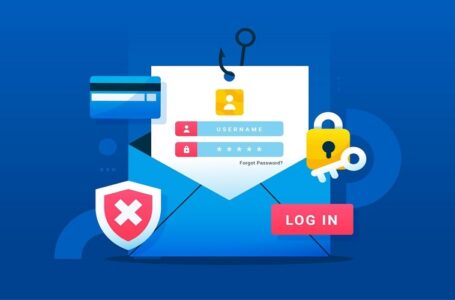RAVER Launches – Revolutionizes Social Media Marketing with AI-Powered Content Creation
Beyond the buzzwords: Top B2B marketing trends to watch for in 2022

Marketing inherently is a field that’s in constant flux. There are new technologies, platforms, and strategies emerging all the time – and it can be tough to keep up with what’s hot right now, what to try, where to focus both your monetary and cognitive budgets, and so on. It’s safe to assume that B2B marketing is not what it used to be pre-pandemic. After the chaotic 2020 and the rise of a ‘new normal’ in 2021, we’re trying to make sense of this brave new world. As a result, we re-evaluated our processes, tactics, and strategies.
Coming from a hopeful 2021, it’s time to turn our attention to what will be taking over the B2B marketing space in 2022. Hopefully, this will give you some ideas of where to focus your efforts in the coming year.
The FOMO and how to deal with it
First and foremost, remember you don’t need to hop onto a new trend. There’s always something new and shiny that’s just been invented to capture our attention whether it be social audio (Clubhouse, Discord) or NFTs (non-fungible tokens). It’s easy to get caught up in the FOMO – thinking you must try every new tactic, strategy and platform out there. Not only is this impossible, but it’s counterproductive. Not everything will work for your business – and even if it does work, you don’t want to overcommit and spread yourself too thin.
Instead of trying to do everything at once, focus on a couple of key areas that you think might have the potential for your business. Then rigorously try, test, and measure them out – if it works for your brand, keep on doing it!
However, it’s non-negotiable to stay on top of your industry trends and have a solid framework and filters to know which trends to focus on, experiment with, and always learn.
So, how to deal with the FOMO? How can you see past the buzz and focus on what you really need? As a B2B marketer answering these five questions could be your first step:
- What is the industry trend?
- Is it relevant to our audience and business goals? Is our target audience already on that platform/using that strategy? Does it make sense for them? Is it worth experimenting with?
- If yes, what would be the best way to experiment with this new opportunity (start small)?
- What are we currently doing that overlaps (at least remotely) with this trend and could be an extension?
- How could this trend be incorporated into our current marketing framework?
- Can we be consistent with this new strategy/tactic, or will it burn us out too quickly – and waste time, resources, and effort if we don’t see results?
- Do we have the bandwidth/resources to execute consistently and adequately?
- What are our competitors doing? Are they already ahead of us in this area?
Think of these questions to avoid unnecessary stress and anxiety in the name of having a clear vision of where you want your business to go.
Once you have this filter on, let’s explore the top B2B marketing trends that you should be watching out for in 2022.
1. Data-driven personalised engagement and targeting
Personalisation is a significant trend to watch out for in 2022. In fact, according to a Gartner study, poor personalisation may cost brands up to 38% of their customers. This is supported by research by Digital Connections who report that almost 50% of people will disregard irrelevant or bombarding ads from brands – on the flipside, 36% of people are more likely to buy from them with tailored and targeted messages.
To add fuel to the fire, according to TrustRadius, almost half of all B2B buyers and financial decision-makers are millennials. In the age of tailored, personalised B2C UX, millennials are highly likely than any other generation to be influenced by personalisation. With Gen-Z quickly becoming a customer base, this shows no signs of slowing down.
What does this mean for B2B marketers? Customers want to be treated as individuals. Not as users, accounts, or prospects. They expect relevant content and offers that are tailored specifically for them.
But this isn’t news. Marketers have been talking about this for years. However, it’s not just about name recognition or location-based recommendations anymore; personalisation has evolved to new heights and will only continue to increase in importance and expectations.
The once assumption-based, batch-and-blast approaches are no longer effective. Instead, marketers need to move towards meaningful, personalised customer experiences powered by “real-time” data and insights.
Personalisation is not a tactic – it’s an experience. And one that can be amplified by having a solid BDR/SDR team behind you for personal outreach, as well as data-driven marketing automation tools and technologies to help you optimise your customer communication along their journey.
Personalisation is tech-driven and data-driven. Leveraging AI, ML, and other autonomous marketing tools to help you personalise your customer experience at scale.
To get started with hyper-personalisation, you can use the following tips:
- Have an automation strategy in place that personalises your customer’s experience across all channels.
- Use AI-driven content recommendations to serve personalised content suggestions based on past behaviour and interests.
- Leverage machine learning to score leads and customers differently, then personalise their experience accordingly.
- Use geo-targeting to deliver location-based content and offers.
- Employ predictive analytics to identify which prospects are most likely to buy and target them with personalised content and offers.
- Approach personalisation holistically – it should be baked into your customer’s experience across all channels and touchpoints.
- Personalisation is a whole-company initiative that everyone on the team must champion.
2. Leveraging client onboarding/training/resources for marketing
Given that 74% of people likely switch brands if the purchasing process is too difficult (Salesforce), there’s an increased need for perfecting digital customer experiences, including an explosion of resources for client onboarding, training, community support, and more.
Those involved in creating these resources are often in the client-facing or training departments – but marketers should also note that they can leverage these resources for marketing purposes.
For example, if you start to blog about your onboarding process and share tips from your own content, it helps position you as a thought leader and builds authority with potential customers (so when it comes time to buy, they know who to go to).
BDR/SDR teams are often the first line of contact for customers. As such, they become an extension of your marketing team and can help promote resources (like training materials or community hubs) to potential buyers.
As a marketer, if you’re not already looking to leverage these resources as marketing channels, then you should be.
Here are just a few ways to get started:
- Create content around your onboarding process and share it on social media.
- Use your client training materials as the foundation for blog posts or guides that you can then promote through other channels (email, paid ads, organic social).
- Leverage community hubs to drive engagement by asking customers or prospects what they’re struggling with, then use that data to inform your content marketing strategy.
- Take advantage of the knowledge of your client-facing team and work with them to create a webinar series that promotes training materials or resources.
- Start a podcast series and interview BDR/SDR team members or clients about their experience using your product or service.
The possibilities are endless when you start thinking beyond the buzzwords and look at what’s happening inside of your business. Whether onboarding, training, community support, etc., you can use it to power your marketing efforts.
Nothing is more powerful than the experience your customers have when they work with you. And if you can get that in front of potential customers, it will go a long way toward helping them understand who you are and what makes you unique – which is essential for winning trust and business in today’s competitive world.
3. Using social media to build transparency and trust
Transparency and trust are at the core of any good B2B relationship, whether for lead gen or retention. 94% of customers say they would stay loyal to companies that offer complete transparency.
Transparency is the foundation of trust, and it’s a make-or-break differentiator in the B2B world – trust is the number one reason buyers choose a brand over another.
With this mind, it’s time to start thinking about your social media strategy in terms of transparency and trust first and foremost – not as an afterthought or different tactic. Have these twins pillars of transparency and trust when thinking about the content you’re creating, sharing and engaging with online. As SproutSocial outlines, the rewards pay off – 86% of people will leave their business for a competitor if they see a lack of transparency on social media.
When you start thinking about the content you’re creating, sharing, and engaging with online as a way to build trust first, it changes how you approach social media – and leads to better results.
In 2022, expect to see an increased focus on:
- Integrating real-time customer feedback into social media content.
- Making it easy for customers to find the contact information of key decision-makers.
- Sharing customer stories and case studies
- Being transparent about pricing, products, and services.
- Providing regular updates on company performance (including blog posts, podcasts, videos, etc).
- Allowing customers to see your company values and culture.
The bottom line is that social media provides an opportunity to build trust with customers by being transparent about who you are, what you do, and how you do it. And if you can nail that transparency and trust factor, it will go a long way in helping your business succeed.
4. Machine learning augmentation of data in CRM, marketing automation and web analytics
Machine learning augmentation of data uses machine learning algorithms to improve the quality, accuracy, and completeness of data. It’s a key ingredient in modern data science. It has been used with great success to improve the accuracy of recommendation systems, identify patterns in large datasets, analyse text for sentiment analysis, and more.
Machine learning augmentation takes existing customer information (e.g., demographic characteristics) and enriches it by applying machine learning techniques to discover new patterns or associations that were not obvious from the data alone.
Leveraging machine learning and AI to augment data will be one of the big B2B marketing trends of 2022. The tightening of privacy restrictions means businesses will have to depend increasingly on first-party and inferred data for lead generation and closing deals.
Machine learning and artificial intelligence are already being used by many businesses to increase efficiency, provide personalised experiences for customers, and improve the accuracy of marketing campaigns. Gartner predicts that machine learning will be the top AI initiative for businesses by 2030, with decision support/augmentation surpassing all other types of AI initiatives.
The dynamics of B2B Marketing are changing, and with that, the tools we use to be effective must change. Machine learning and AI are already being used to great effect in CRM, marketing automation, and web analytics.
However, taking advantage of these technologies is not a given. It requires having a robust, clean data foundation to build on. Data cleansing and data augmentation will be essential to enable these technologies to work their magic.
Customer loyalty and profitability are increasingly tied to a company’s personalisation of customer experience. Machine learning and AI offer the potential to personalise at a scale that was not previously possible. However, this can only be realised if businesses have access to high-quality data throughout their systems.
To be successful in the years to come, businesses will need to focus on data quality and data augmentation. This means ensuring that all customer information is cleansed and enriched with machine learning algorithms to be used effectively to personalise the customer experience.
Conclusion
While hyper-targeting, machine learning augmentation of data, building transparency and trust through social, and leveraging client onboarding resources are all the rage, we can’t discount what marketing is doing for key organisational groups to adopt and navigate change successfully. And how influencer marketing in the B2B space took off this year and “increase brand awareness” to become this year’s top objective for B2B marketers. (HubSpot, 2022)
With so much going on, don’t get caught up in the FOMO– think about what will help you reach your business goals. Experiment with new trends, but don’t try and do everything at once, or you’ll end up spreading yourself too thin.
Although it’s crucial to stay on top of industry trends, not everything new and shiny is worth trying out for your business. By focusing on a few key areas and rigorously testing them, you’ll be able to see better results than if you were to try and dabble in everything.




